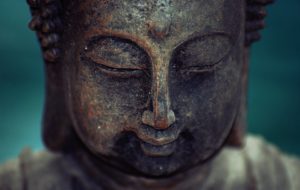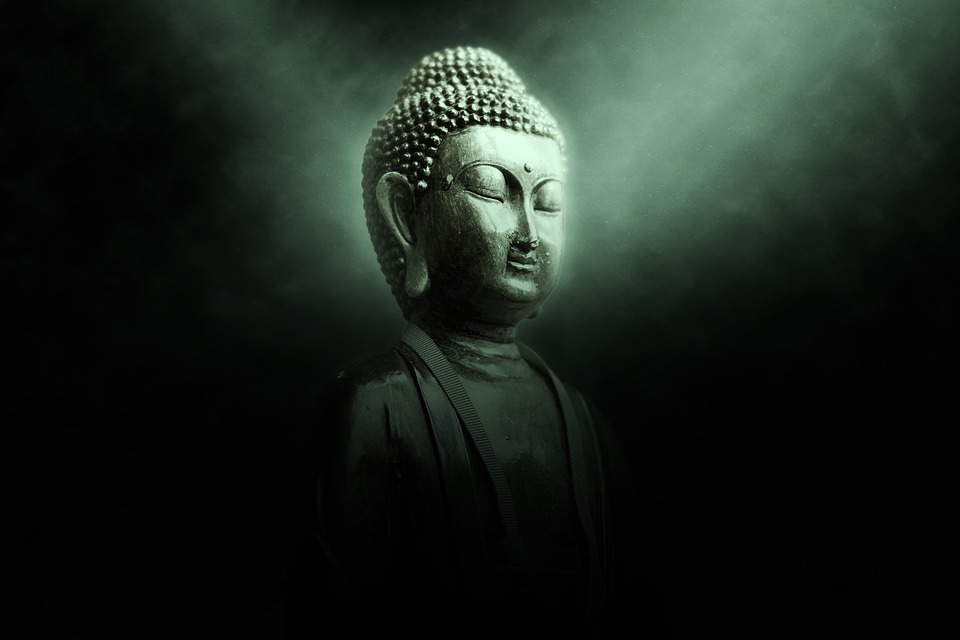With the death of historical buddha, Mahayana Buddhism split from its earlier beliefs in Buddhism, Hinayana, the lesser cycle.
Hinayana sought to preserve the original teaching of Historical Buddha as close to its contents as possible. Believers of the text will certainly achieve Buddhahood too. At the time, even though the Mahayana Buddhism affected and degrades their beliefs, those who have reached enlightenment will continue to teach and guide those in need rather than choose the path to phase out, no matter how passive one believes of Hinayana school of teachings.
Mahayana Buddhism is more flexible and innovative and chooses a more active and ethical role towards changes in society.
Everyone can receive salvation. A quicker path to enlightenment. The existence of guanyins, supernaturalist people who do not deny the world, remains in the world to help the people gain enlightenment, rather than choosing a straighter path for themselves, they have gain spiritual enlightenment and served as guardians to those who need to know the path, rather than choose a path towards Buddhahood. they have made a vow to help those in the world rather than choose an individualistic path towards self Buddhahood.
Anyone can practice Buddhism and attain enlightenment
One thing of note is that in Mahayana beliefs, anyone can practice Buddhism and attain enlightenment, whereas, for Hinayana, the group becomes smaller, for those who wish to attain it, they need to opt for a monastic life in a temple, serving and learning the teaching of Buddha through seclusion.
However, one must note that although there is a shift in changes of beliefs and causing the schism to form, both greater and lesser vehicles can co-exist with one another. It was only a matter of distinction between the two whether Buddhism is supposed to benefit self or benefitting others. The term inferior was in fact given by Mahayana believer to Hinayana Buddhism.
Mahayana Buddhism has chosen a path in which Buddha has become supernaturalistic, god-like even. Mythological.
The belief that arhats are ranked lower than Bodhisattva. Why?
So when Mahayana Buddhism says that it actually removes the weakness from Hinayana, there are a few points we can look at:
 1. Mahayana Buddhism reaches itself out to promote. more people can gain salvation, perhaps hence “overcoming the weakness in Hinayana”, who limits the option of salvation to only those who choose a secluded monastic approach.
1. Mahayana Buddhism reaches itself out to promote. more people can gain salvation, perhaps hence “overcoming the weakness in Hinayana”, who limits the option of salvation to only those who choose a secluded monastic approach.
2. however so, the re-enactment of the buddha into a supernaturalistic state by Mahayana somehow changes the original doctrines of historical buddha teachings. Even so, we should note that there were not recorded teaching of Historical Buddha at all for four hundred years. Early teaching of Buddism is like the believers in Hinduism, who believes the teachings are too sacred to be passed down through writings. hence, Oral passings were done these hundred of years as means of upkeeping to the truths of Historical buddha, which is adopted by Hinayana believers.
3. Both seekers are the same. knowledge-based. to understand the world. so there is no weakness to each one belief.
4. Buddhism does not matter where it goes, was transformed. Looking at Buddhism in western origins, and where Buddhism thrives, for example, Japan, Korea, China, India, Indonesia, Cambodia, Thailand..etc. you will realize despite which sect of beliefs each has, the beliefs changes in accordance with the practices earlier held in the country itself. Hence saying so, flexibility is not really an issue. The place of choosing Buddhism as a belief affects how Buddhism is being absorbed into the system, adopting local goddesses and gods into the system, flexibility in which allowing easier acceptance by the locals.
5. One thing of note is that Mahayana frees out more on the female agenda. hence, giving more to the female gender, in which in Hinayana, there are limitations, even though women are liberated in a small amount of sense.
6. One also must look at the Mahayana beliefs itself. because it opens its arms to more to belief and sometimes warps its belief to accept more who wants salvation, it might lose its true meaning. For example, a popular belief by one sect is that if you believe in Buddha even at your death bed, you will find salvation and death when death comes, which is almost so Christian life in thinking! This might actually cause the true meanings and teachings of the Historical Buddha so warp and different.
We must note that because of the shift in beliefs, many works of art in aesthetic values were created and pass down during this long history and developments of Buddhism, creating many grand works of art in the form of poetry, architecture and sculpture, murals as recordings, which remains a true value to our society in terms of culture, knowledge and records.
Buddhism will eventually change and evolved till one day it either phases off in beliefs, like during a period where Muslim invasions had taken over India. Similarly, it will re-invent itself again should it need it. To say that Mahayana Buddhism has overcome Hinayana’s weakness is only a choice of words, as both ultimately seek the teaching of Buddha, whether the beliefs might differ a not.





